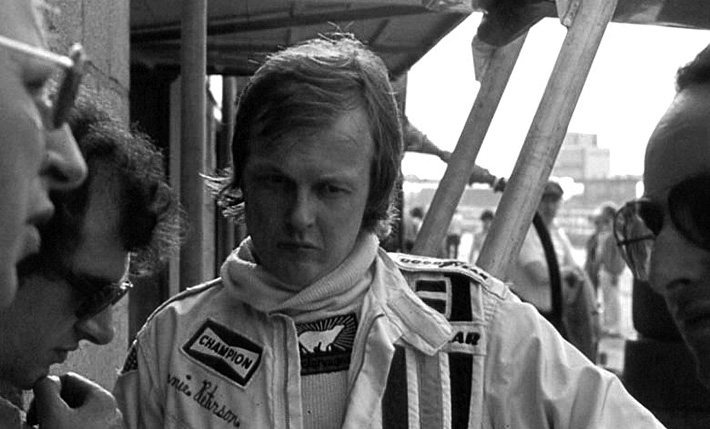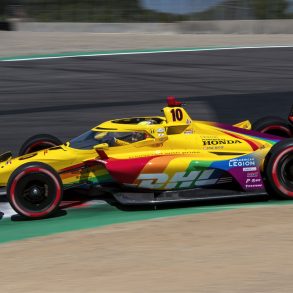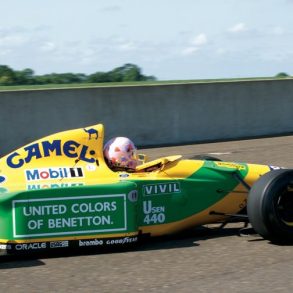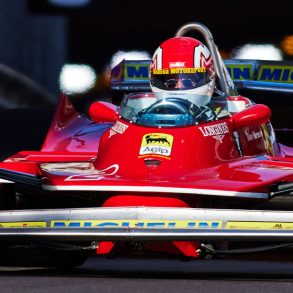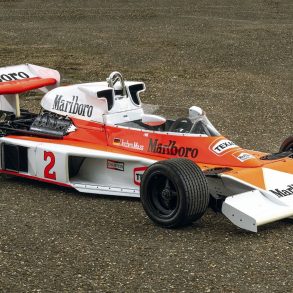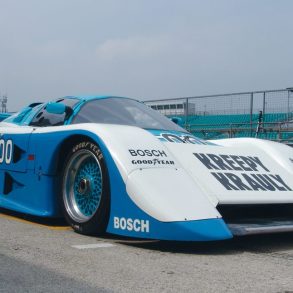Ronnie Peterson Biography
Ronnie Peterson was born on 1944 in Örebro, Sweden, the son of an avid racer of moderate accomplishments. His father’s love for all things mechanical was inherited by his son. When Peterson was only eight years old his father built him a car, or at least the young Ronnie considered it a car though it looked more like a cross between a tractor and a go-cart. It originally had a 50 cc moped-engine and had a top speed of 12 km/h. Eventually Peterson wore out the engine is his “tractor” Ronnie’s dad, Bengt realizes that Ronnie had worn out the moped-motor in the tractor, and instead it is equipped with a 118 cc Husqvarna-motor. After the motor was switched the tractor could reach 40 km/h. His father along with his friend Sven Anderson would attend the yearly ice-race in Hjalamaren. By then the elder Peterson had quit racing but this didn’t stop his son from driving anything he could get his hands on. In 1962 he started karting and a year later he became Swedish Champion. By 1966 he made his debut in Formula 3 driving a car built by his father.
“Ronnie drives absolutely flat-out, all the time,” said Chapman after his first few races with the Swede. “If he’s off the pace, then it might be the car. Not him.” Colin Chapman
During this time he developed a friendship with another Swedish driver, Reine Wisell. Moving up to Formula Three he drove a Svebe, a copy of the popular Brabham of the day that he co-designed with his father Bengt and Sven Andersson. His natural talent was recognized by the Tecno team who signed him up for the 1968 season. In 1969 he scored an impressive victory at the prestigious F3 support race for the Monaco Grand Prix, beating his compatriot Reine Wisell after a wheel-to-wheel battle.. This race traditionally displayed the top young talent and often served as a springboard into Formula 1. By the end of the year he was a Formula 3 champion.
Peterson in fact would make his Formula 1 debut the following year in a customer March entered by the Antique Automobiles team . Gaining the attention of the factory he was soon offered a works drive. In 1971 he had his coming out when he scored five second place finishes and was runner-up to Jackie Stewart in the World Championship. That year he would also claim the European Formula 2 crown.
“I worshipped him, that’s why my own helmet is blue and yellow.” Michelle Alboreto discussing Ronnie Peterson
The March team was run on a shoestring budget and it was not until he left for Lotus in 1973, that he won his first race at the French Grand Prix. Teaming with Emerson Fittipaldi, the current World Champion, he was proving to be more than a match for the Brazilian. He went on to win three more races that year and finished third in the World Championship. Fittipaldi soon left for McLaren and Ronnie Peterson continued with Lotus as the team leader for the next two years but the Lotus 72 was at the end of its useful life. In 1976 he returned to March but had limited success. 1977 brought an offer to drive the 6-wheel Tyrrell. This very complex car was just the opposite of what Peterson needed. Being a disaster as a test driver he was lost in the Tyrrell. 1977 served as the low point of his career and for 1978 he returned to Lotus as a number two to Mario Andretti.
Mario at first questioned this arrangement as he well new that Ronnie was no number two. As an indication of his character Ronnie accepted this position without malice; a far cry from the political intrigue that is Formula 1 today.
Together they dominated the 1978 season in the Lotus 79 with Peterson scoring a pair of spectacular wins. Peterson acted the loyal number two but there were time when his brilliance could not be masked. He out qualified his teammate at Brands Hatch even though he was using hard compound tires, rather than the qualifiers which were held for Andretti, and a half tank of gas! After his victory at Zeltweg in Austria he trailed Andretti by only 9 points with 4 races remaining. It was well known that he would be with another team in 1979 and some suggested that he should just go for the championship with nothing to lose.
Nothing except his word:
“I’m going to McLaren next year”, he said. “It’s not announced yet, but Mario knows, Some of these people,” he sighed, “who say I should forget our agreement now… I don’t understand them. I had open eyes when I signed the contract, and I also gave my word. If I break it now, who will ever trust me again?”
At the next race Andretti’s car broke an exhaust and lost power yet Peterson followed him over the line. Peterson felt that his time would come next year, as he had been offered a number one position with McLaren.
All of that ended before it began when Ronnie Peterson died as the result of an accident at Monza. In 1978, in Formula One the music had stopped, more than a man died that day for Formula 1 had lost its innocence. In a tragic postscript to Ronnie Peterson’s story, his wife Barbro would also become a victim. Having always struggled to come to terms with Ronnie’s death she took her own life in 1987.
…. Team draughtsman Martin Oglivie recalls Peterson going round lap after lap, proving the Lotus-Getrag gearbox, then suddenly going faster…’And when he came in we said, “Ah you’ve sorted out the selection problem”, and he just smiled that slow smile and said, “No. I must stopped you-sing the clutch.” ‘
“Gilles particularly liked to hear about Ronnie Peterson, his favorite F1 driver. He had seen Peterson’s spectacular sideways displays on television and in person at the Grand Prix at Mosport in 1971. He and Joann stood on the outside of Turn One in the rain watching the cars of the stars tiptoe around in admittedly terrible conditions. The exception was Peterson, who powered his rain-tired March up from sixth on the grid to engage polesitter Jackie Stewart in a tremendous tussle. He muscled past him into the lead and stayed there for thirteen laps until he clouted a backmarker (the Canadian driver George Eaton in a BRM). Peterson continued to drive in total disregard of the weather and the bent nose of his March. Stewart won, with Peterson a close second, but it was Ronnie who impressed Gilles.” Excerpt from the book ‘Gilles Villenueve: The Life of the Legendary Racing Driver’, written by Gerald Donaldson.
“That would be a bloody fantastic spectacle, I can tell you. We would take corners one gear lower than we do now, and get the cars sideways. You know, people still rave about Ronnie Peterson in a Lotus 72, and I understand that. I agree with them. That’s the kind of entertainment I want to give the crowds. Smoke the tyres ! Yeah ! ” Gilles Villeneuve discussing his ideal car and driver.
Victories
1973 Austria, 1973 France, 1973 Italy, 1973 United States, 1974 France, 1974 Italy, 1974 Monaco, 1976 Italy, 1978 Austria, 1978 South Africa










